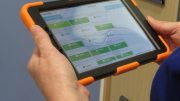Telehealth has already been a trend in the healthcare industry even before the coming of the COVID-19 pandemic. However, since the outbreak, telehealth consultations are being utilized to a greater degree to limit contact and still deliver the necessary health services. Telehealth consultation has proven to be an effective means and a system that is alleviating the burden of health workers.
The use of technology is something that is of great benefit in these times of quarantine and social distancing. It enables people to connect and get the services they need all within the comfort of their homes. It is a strategy that limits waiting, infection, and ensures the delivery of public health services.
Upscaling of Virtual Care Capacity
Since the outbreak, patients have been calling healthcare workers to speak with doctors about the symptoms of COVID 19 disease. Healthy systems use the triaging system to help the public assess their symptoms before getting scheduled with a doctor. Some hospitals even use a chatbot that answers FAQs and assessments related to COVID 19 symptoms. There have been thousands and millions of people who utilize these services in areas like New York. Virtual visits have spiked since pre-pandemic levels.
After interacting with AI chatbots, patients have to line up on a virtual queue to get a trained clinician for virtual consultations. Since the rise of the pandemic, there has been a rise and an extended wait, and some may even have to wait for up to a day for a video visit with a doctor. Throughout the United States and elsewhere in the world, there is a variation of some kind of this system of chatbots and video conferencing with doctors to successfully treat patients in the time of the pandemic. They are striving to put more clinicians on board in the virtual world as the learning curve and demand will flatten out.
Telehealth on the Mainstream
Telehealth consultation has already cropped up for several years already, but now is the time for it to become an established system in healthcare. The increase in telehealth consultations has skyrocketed several and multiple times since the outbreak. There has been a 500% increase in telehealth visits within the first couple of weeks since the outbreak. Because of these, thousands of providers have been trained to conduct telehealth visits with the public.
Another great thing about telehealth is it lets patients in acute care talk with their families. Most health systems have successfully increased the scope of their telehealth systems for higher demand, but for some others, there is still a struggle to meet demand and scale-up.
Telehealth has been growing in the past years but not at a fast rate since the pandemic. It has risen more slowly than expected before. One reason for this is the lack of revenue that puts it at the same level as in-person visits. There is a need for telehealth physiotherapy to be promoted for both public health and safety issues. The pandemic could be the tipping point of how health care is experienced in the future. The public will get used to telehealth visits as a normal way of getting health care for low-emergency needs.
A related area to telehealth consultation is remote patient monitoring and home monitoring. RPM has grown steadily in the past years, with the need to monitor patients with chronic health issues in their homes. Patients Under Investigation (PUI) who are suspected of having COVID-19 are also being monitored as well as others who are worried about their own symptoms.
The current pandemic may very well change how healthcare is delivered, and how we live and work will drastically change for the future of a healthier world.
Digital Transformation Will Accelerate
Many healthcare systems will accelerate their digital transformation roadmaps encouraged by the success of telehealth in responding to the crisis and delivering the necessary health services. Many healthcare organizations, hospitals, and clinics will be increasing their focus on planning and strategy for a digitized delivery of services and prepare for new structures and systems when the pandemic blows over.
Final Thoughts
Telehealth consultation systems have been used in the past, but it was primarily underutilized. The pandemic was the time when it was strengthened and scaled up to meet increased demand from the public. Telehealth is a new and alternative way to receive healthcare and maybe something that will stay and only be improved upon in the future.





